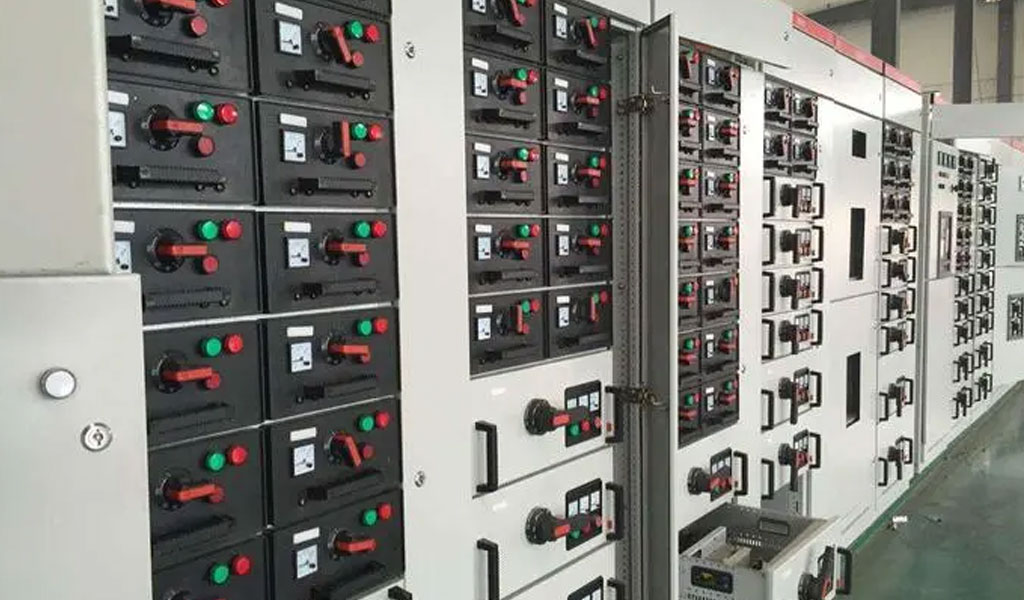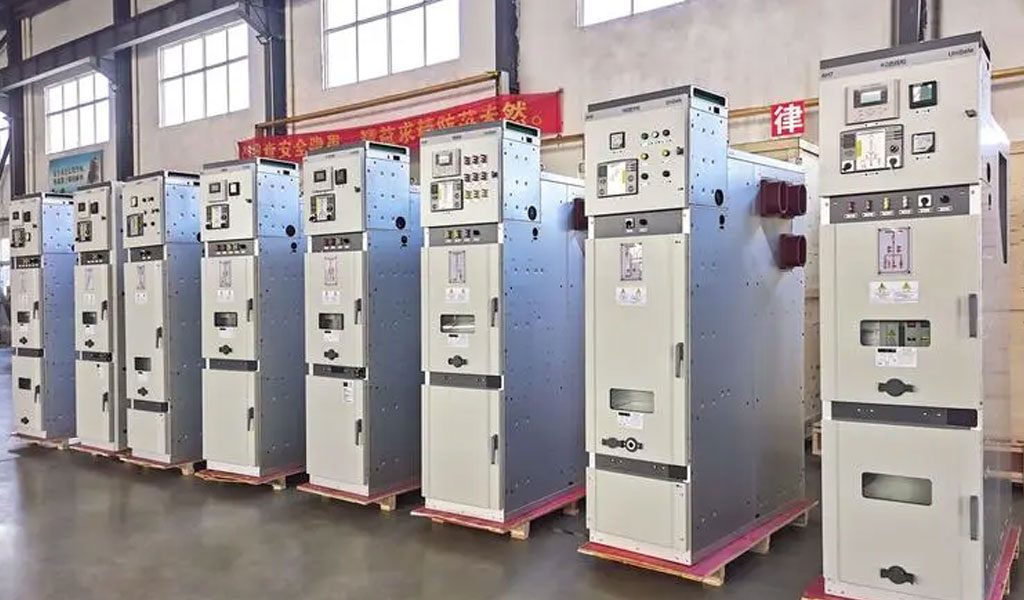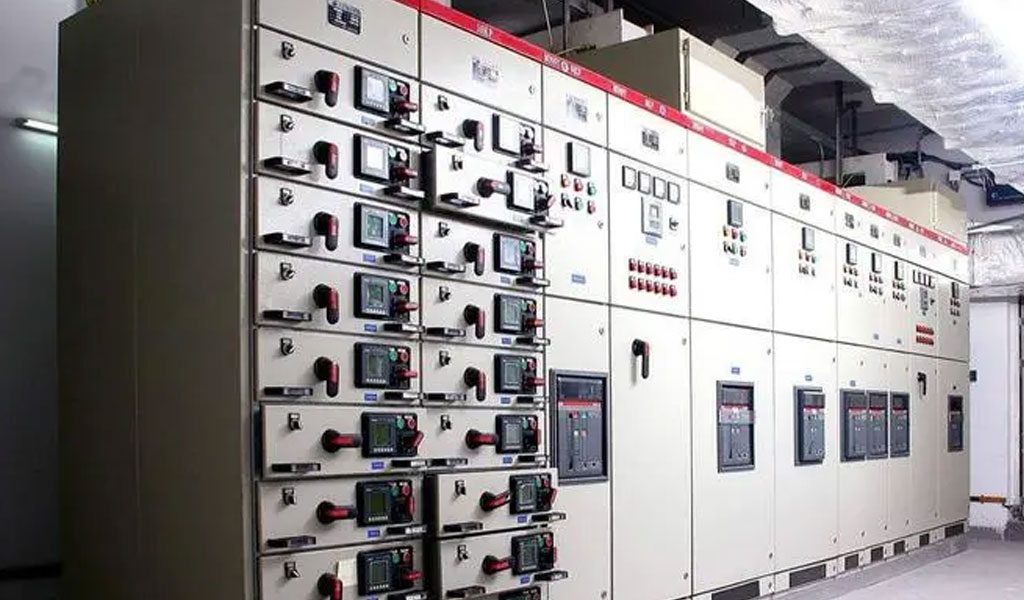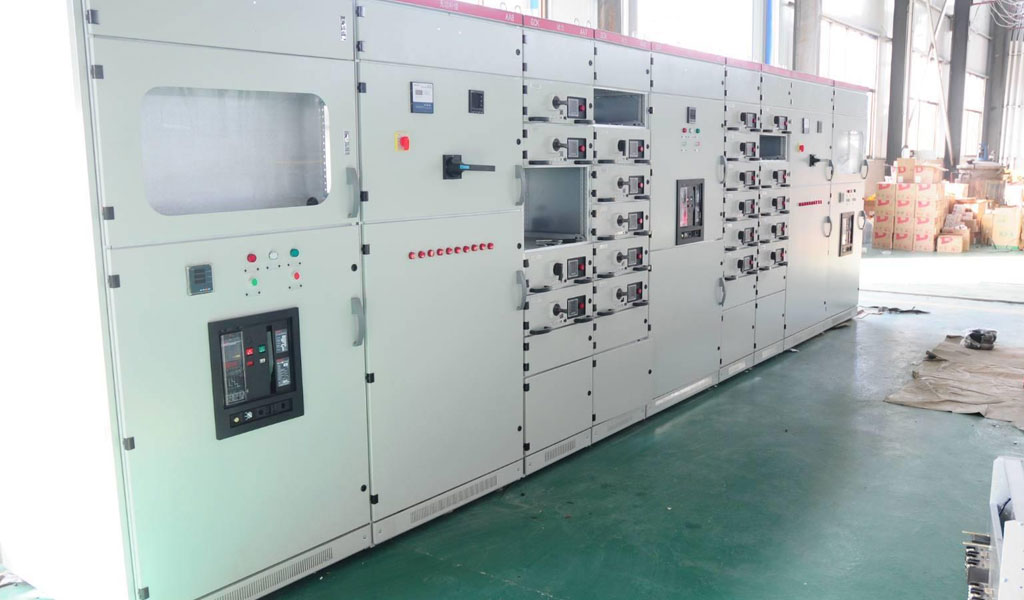Switchgear is an essential component in the electrical power system, used to control, protect, and isolate electrical equipment. Its primary functions include interrupting current flow to allow for the maintenance and protection of electrical circuits and equipment. Switchgear is employed across various applications, including residential, commercial, industrial, and utility-scale installations. This article explores the different types of switchgear, their classifications, and their specific uses within the electrical power system.
Based On Voltage Level
Switchgear is classified based on the voltage level at which it operates. This classification helps in determining the appropriate type of switchgear for specific applications.
Low Voltage Switchgear (LV)
Low voltage switchgear operates at voltages up to 1 kV. It is commonly used in residential, commercial, and industrial applications for the control and protection of electrical systems. Components of low voltage switchgear include:
Circuit Breakers:
- Miniature Circuit Breakers (MCB): These are used for protecting low voltage circuits from overloads and short circuits in residential and commercial installations.
- Molded Case Circuit Breakers (MCCB): Suitable for higher capacities in industrial settings, they protect circuits from overloads and short circuits.
- Residual Current Circuit Breakers (RCCB): These provide protection against earth faults or leakage currents, crucial for preventing electric shocks.
Switches and Disconnectors:
- Load Break Switches: Used to disconnect and isolate parts of the electrical network under load conditions.
- Isolators: These are used to ensure that a circuit is completely de-energized for maintenance.
Protective Devices:
- Fuses: Provide overcurrent protection by melting and breaking the circuit when excessive current flows through.
- Relays: Electromechanical or solid-state devices that protect electrical circuits by detecting faults and triggering circuit breakers.
Medium Voltage Switchgear (MV)
Medium voltage switchgear operates at voltages between 1 kV and 36 kV. It is used in industrial, commercial, and utility applications to manage and protect medium voltage electrical networks. Components of medium voltage switchgear include:
Circuit Breakers:
- Vacuum Circuit Breakers (VCB): Utilizes a vacuum to extinguish the arc, suitable for medium voltage applications due to their reliability and low maintenance.
- SF6 Circuit Breakers: Use sulfur hexafluoride gas to quench the arc, known for their high efficiency and durability.
- Oil Circuit Breakers: Though less common today, they use oil as the arc-quenching medium and are used in older installations.
Load Break Switches:
- Air Load Break Switches: Use air as the insulating medium and are used to open and close circuits under load.
- Gas Load Break Switches: Similar to air load break switches but use gas as the insulating medium for better performance.
Disconnectors:
- Motor-Operated Disconnectors: Used for remote operation and are commonly used in substations.
- Manual Disconnectors: Operated manually, suitable for less frequent operations.
Protective Relays:
- Overcurrent Relays: Detects overcurrent conditions and triggers circuit breakers.
- Differential Relays: Provides protection by detecting differences in current between two points.
- Distance Relays: Operates based on the distance of the fault from the substation.
High Voltage Switchgear (HV)
High voltage switchgear operates at voltages above 36 kV. It is essential for utility and large industrial applications to manage and protect high voltage electrical networks. Components of high voltage switchgear include:
Circuit Breakers:
- Gas-Insulated Circuit Breakers (GCB): Enclosed in a gas-filled chamber, these breakers are highly reliable and efficient for high voltage applications.
- Air Blast Circuit Breakers: Use compressed air to extinguish the arc, suitable for very high voltage applications.
- Oil Circuit Breakers: Although less common, they use oil to quench the arc and are used in older high voltage installations.
Disconnectors:
- Pantograph Disconnectors: Used in high voltage applications, they provide visible isolation points.
- Vertical Break Disconnectors: These disconnectors are used to isolate sections of the network for maintenance.
Protective Relays:
- Overvoltage Relays: Protects the system from voltage surges.
- Underfrequency Relays: Detects and responds to low-frequency conditions, protecting the system from frequency instability.
- Distance Relays: Provides protection based on the impedance between the fault location and the substation, used extensively in transmission networks.
Based On Insulation Medium
Switchgear can also be classified based on the type of insulation medium used. The insulation medium plays a crucial role in ensuring the reliable operation of switchgear and protecting it from electrical faults.
Air Insulated Switchgear (AIS)
Air insulated switchgear (AIS) uses air as the primary insulating medium. AIS is commonly used in medium and high voltage applications due to its simplicity and ease of maintenance.
Components of AIS
Circuit Breakers:
- Air Circuit Breakers: Utilize air to extinguish the arc formed when the circuit breaker operates. They are mainly used in low and medium voltage applications.
- Vacuum Circuit Breakers: Utilize a vacuum as the arc-quenching medium. These are widely used in medium voltage applications due to their reliability and low maintenance requirements.
Disconnectors:
- Motor-Operated Disconnectors: Used for remote operations, providing ease of use and safety in medium and high voltage systems.
- Manual Disconnectors: Operated manually, these are more common in low to medium voltage systems where frequent operation is not required.
Busbars:Air-Insulated Busbars: Typically exposed to air and mounted on insulators to prevent short circuits and ensure safe operation.
Applications of AIS
- Outdoor Substations: AIS is often used in outdoor substations due to its robustness and ease of access for maintenance.
- Industrial Plants: Suitable for industrial environments where the switchgear can be housed in a protected area.
Gas Insulated Switchgear (GIS)
Gas insulated switchgear (GIS) uses gas, typically sulfur hexafluoride (SF6), as an insulating and arc-quenching medium. GIS is used in medium and high voltage applications due to its compact size and high reliability.
Components of GIS
Circuit Breakers:
- SF6 Circuit Breakers: Use sulfur hexafluoride gas to quench the arc, offering high efficiency and durability.
- Hybrid Circuit Breakers: Combine different arc-quenching mediums, such as SF6 and vacuum, for enhanced performance.
Disconnectors:
- Motor-Operated Disconnectors: Provide reliable remote operation and are housed in gas-filled compartments for added safety.
- Manual Disconnectors: Operated manually, suitable for applications where remote operation is not necessary.
Busbars:Gas-Insulated Busbars: Enclosed in a gas-filled compartment to prevent oxidation and corrosion, ensuring longevity and reliability.
Applications of GIS
- Urban Substations: The compact size of GIS makes it ideal for densely populated areas where space is limited.
- Industrial Plants: Suitable for environments where space constraints and high reliability are critical.
Sulfur Hexafluoride (SF6) Circuit Breakers
SF6 circuit breakers use sulfur hexafluoride gas as an insulating and arc-quenching medium. SF6 circuit breakers are highly efficient and reliable, making them suitable for medium and high voltage applications.
Characteristics of SF6 Circuit Breakers
- High Insulation Strength: SF6 has excellent insulating properties, allowing for compact designs.
- Reliable Arc Quenching: The gas effectively extinguishes arcs, ensuring quick and safe interruption of fault currents.
- Low Maintenance: SF6 circuit breakers require minimal maintenance compared to other types.
Applications of SF6 Circuit Breakers
- Substations: Providing reliable protection for transmission and distribution systems.
- Industrial Plants: Ensuring the safe operation of high voltage equipment.
Vacuum Circuit Breakers
Vacuum circuit breakers use a vacuum as the arc-quenching medium. They are widely used in medium voltage applications due to their high reliability, low maintenance requirements, and long service life.
Characteristics of Vacuum Circuit Breakers
- Efficient Arc Quenching: The vacuum effectively extinguishes arcs, ensuring safe interruption of fault currents.
- Long Service Life: Vacuum circuit breakers have a long operational life due to the minimal wear and tear of the vacuum interrupter.
- Low Maintenance: These breakers require minimal maintenance, making them cost-effective over their lifespan.
Applications of Vacuum Circuit Breakers
- Industrial Plants: Protecting medium voltage electrical equipment.
- Commercial Buildings: Ensuring the safe operation of electrical systems.
Oil Circuit Breakers
Oil circuit breakers use oil as both an insulating and arc-quenching medium. Although they are less common today, they were historically used in high voltage applications.
Characteristics of Oil Circuit Breakers
- Effective Arc Quenching: Oil provides excellent arc-quenching properties, allowing for the safe interruption of high fault currents.
- Insulation: The oil also serves as an insulator, preventing electrical faults.
- Maintenance: Oil circuit breakers require regular maintenance to ensure the integrity of the oil and prevent contamination.
Applications of Oil Circuit Breakers
- Utility Substations: Providing reliable protection for high voltage transmission systems.
- Industrial Facilities: Ensuring the safe operation of high voltage equipment.
Based On the Application Type
Switchgear can also be classified based on the type of application, which determines the design and construction to suit specific environmental and operational conditions. The two primary classifications are outdoor and indoor switchgear.
Outdoor Switchgear
Outdoor switchgear is designed to operate in open or semi-enclosed environments, exposed to various weather conditions. Its construction must withstand environmental factors such as temperature variations, precipitation, and dust. Key characteristics of outdoor switchgear include robust construction, weatherproof enclosures, and ease of maintenance.
Components of Outdoor Switchgear
- Circuit Breakers:Air Circuit Breakers: Utilized for medium and high voltage applications, featuring robust enclosures to protect against environmental conditions.SF6 Circuit Breakers: Often used in outdoor substations due to their compact size and ability to operate efficiently in harsh environments.
- Disconnectors:Manual and Motor-Operated Disconnectors: These devices are designed to provide visible isolation points and are typically housed in weatherproof enclosures.
- Busbars:Air-Insulated Busbars: Exposed to air and mounted on insulators, designed to handle environmental stresses and provide reliable performance.
Applications of Outdoor Switchgear
- Utility Substations: Outdoor switchgear is commonly used in utility substations for transmission and distribution systems, where space and environmental protection are key considerations.
- Transmission Lines: Used for isolating and protecting electrical lines in transmission networks, often located in remote or exposed areas.
- Industrial Facilities: In large industrial plants where switchgear may be exposed to outdoor conditions but still requires robust protection.
Indoor Switchgear
Indoor switchgear is designed for use within enclosed spaces such as buildings, industrial plants, or commercial establishments. It is suited for environments where exposure to weather conditions is minimal, and the focus is on space efficiency and ease of access.
Components of Indoor Switchgear
- Circuit Breakers:Vacuum Circuit Breakers: Commonly used in indoor environments due to their compact size and low maintenance requirements.Air Circuit Breakers: Used in low and medium voltage applications within buildings, providing protection and control in confined spaces.
- Disconnectors:Manual and Motor-Operated Disconnectors: Typically used in indoor switchgear to provide safe isolation for maintenance purposes.
- Busbars:Insulated Busbars: Often enclosed in protective casings to ensure safety and reliability within indoor settings.
Applications of Indoor Switchgear
- Commercial Buildings: Used to manage and protect electrical systems in office buildings, shopping centers, and other commercial facilities.
- Industrial Plants: Employed within factories and manufacturing facilities to control and protect electrical equipment.
- Residential Complexes: In multi-story residential buildings, indoor switchgear provides essential control and protection for electrical systems.
Switchgear classification based on application type—outdoor and indoor—ensures that the equipment is designed to meet the specific requirements of its environment. Outdoor switchgear is built to withstand harsh weather conditions and is used in utility substations, transmission lines, and exposed industrial locations. In contrast, indoor switchgear is designed for enclosed environments where space efficiency and ease of access are paramount. Both types of switchgear play crucial roles in maintaining the reliability and safety of electrical systems across various applications.

In Summary: How To Choose Right Switchgear
Switchgear is a fundamental component in electrical power systems, playing a critical role in the control, protection, and isolation of electrical circuits. Understanding the different types of switchgear based on voltage level, insulation medium, and application type is essential for selecting the appropriate equipment for various applications.Selecting the appropriate type of switchgear based on its voltage level, insulation medium, and intended application is crucial for ensuring the safety, reliability, and efficiency of electrical systems.
The right choice can prevent operational issues, minimize maintenance costs, and enhance the overall performance of the electrical infrastructure.In summary, the diverse range of switchgear types available allows for tailored solutions that meet specific operational requirements and environmental conditions. By understanding the characteristics and applications of each type, professionals can make informed decisions to support the reliable operation of electrical systems across various settings.






